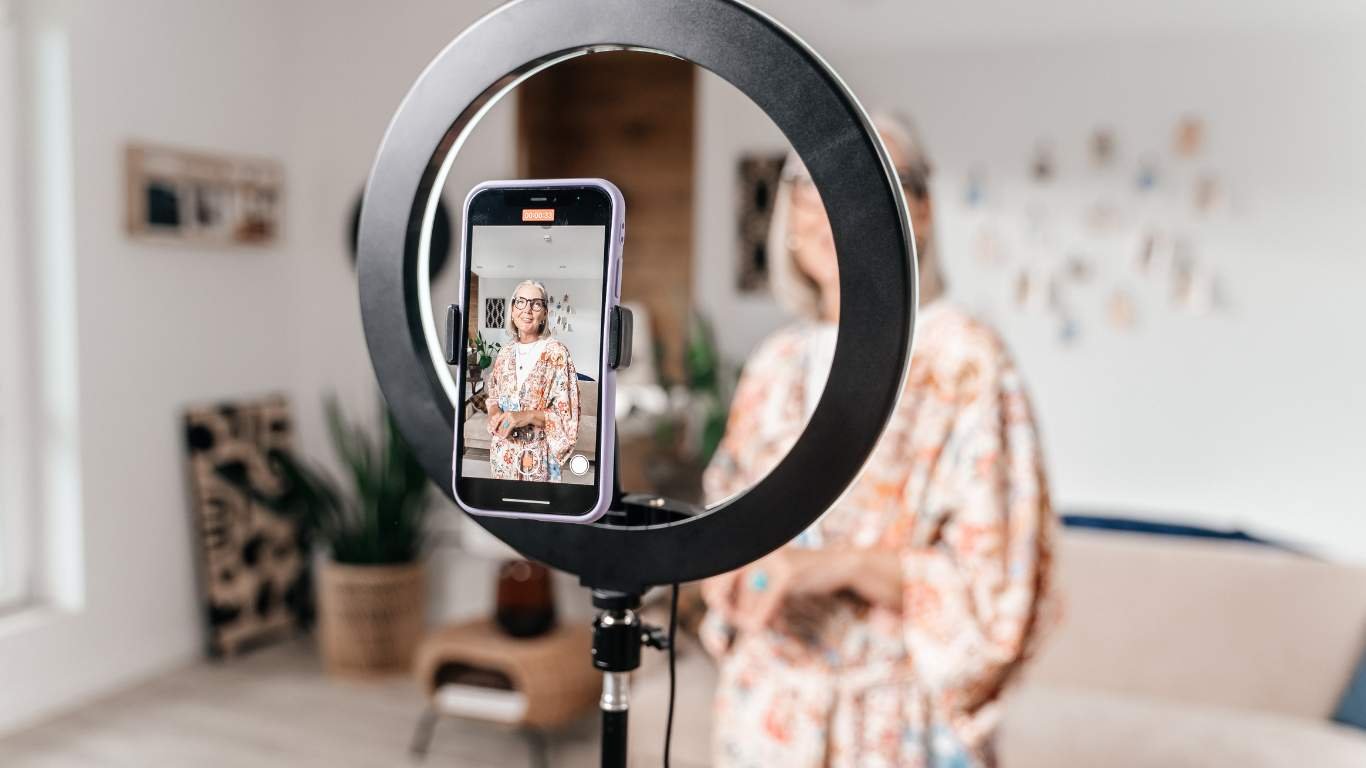Mastering Tactic PR: Essential Strategies for Exceptional Public Relations
Looking for practical ‘tactic pr’ to elevate your public relations efforts? This guide cuts straight to the chase, delivering focused strategies for press engagement, digital presence, and reputation management. Each section provides insights into how to execute these tactics to support your business objectives and track their effectiveness. Discover the tools you need for informed, impactful PR without any fluff, right here.
Key Takeaways
PR tactics, essential for business success, encompass specific activities aligned with company goals, such as press releases, media interviews, and crafting key messages to effectively communicate an organization’s mission.
Crafting a PR campaign involves meticulous strategy, identifying media opportunities, developing resonant key messages, and measuring the impact using tools and direct feedback for continuous refinement.
Social media integration, influencer marketing, and crisis management on digital platforms are pivotal in amplifying brand visibility, steering narratives real-time, and leveraging peer influence for brand trust.
Decoding PR Tactics: What They Are and Why They Matter
In the strategic business landscape, public relations tactics, also known as PR tactics, serve as key maneuvers to outmaneuver the competition. These include specific activities like writing press releases, securing media interviews, and hosting events, all targeted towards achieving overarching PR goals. Adapting and evolving alongside the company’s business needs and objectives, these tactics ensure alignment with the company’s mission.
It is this dynamism, the ability to select the right tools from the PR toolbox to accomplish intended business objectives, that makes PR tactics so crucial to a company’s success.
Understanding the Role of PR Tactics
A successful PR strategyis underpinned by a robust array of PR tactics. These are the proactive and reactive efforts put into play, the bread and butter of PR professionals aiming to disseminate key messages that align with the organization’s mission. This alignment is achieved through a careful selection of brand-specific vocabulary and through differentiating from competitors to create impactful communication. Some common PR tactics include:
Press releases
Media pitches
Media interviews
Social media campaigns
Influencer partnerships
Event sponsorships
Thought leadership articles
Crisis management strategies
By utilizing these tactics, PR professionals can effectively communicate their organization’s message and achieve their goals.
Publishing innovative content or reinforcing a brand’s market position are just some of the actionable steps in PR tactics that, if executed correctly, can garner the media attention every brand seeks.
The Interplay Between Tactics and Overall Business Goals
There is an intricate dance between PR tactics and business objectives, a choreography that requires each step to be in sync with the overall business rhythm. When PR goals are aligned with broader business objectives, the result is a cohesive branding message that resonates deeply with the intended audience. This alignment is the cornerstone of a comprehensive PR strategy, where PR strategies serve as the map guiding decisions and opportunities in support of PR goals.
Examples of Effective PR Tactics in Action
The proof of the pudding is in the eating, and the effectiveness of PR tactics is best demonstrated through real-world success stories, showcasing the impact of well-planned PR efforts. Take the Small Business Saturday campaign, for example, which has significantly improved community engagement and impacted small businesses positively. Similarly, SpaceX’s Falcon Heavy stunt captured global media attention, demonstrating the power of a well-executed PR tactic.
Even the power of a well-crafted press release is evident in Womply’s findings on the impact of online reviews, showcasing the influence of traditional PR tools when used innovatively.
Crafting a Tactic-Driven PR Campaign
Crafting successful public relations campaigns necessitates a meticulous approach, starting with defining clear objectives that lend direction and purpose to the entire PR campaign. It’s about understanding the target audience at a granular level to ensure that messaging not only resonates but engages.
Choosing the correct PR tactics is much like selecting the right ingredients for an exquisite dish, where every choice is made deliberately, aligning with the objectives and understanding of the audience. But it doesn’t stop there; measuring the success of these tactics and maintaining the flexibility to adapt to business changes are essential for refinement and improvement.
Identifying Opportunities for Media Exposure
To garner the spotlight, one must find the right stage. Identifying opportunities for media exposure involves a strategic alignment of company objectives with the media consumption habits of the target audience. It’s about constructing pitches that resonate with the interests of both the outlet’s audience and the expertise that the client can provide.
Local online behaviors, uncovered through tools like Google Trends, offer a treasure trove of insights for creating impactful content tailored to regional interests. Moreover, cross-promotion across various channels, like guest blogging and podcasting, broadens the audience and amplifies the message.
Developing Key Messages for Target Audiences
The essence of a brand is often distilled into a few, powerful words – the key messages that serve as the brand’s voice. These messages should be strategically crafted to be concise, differentiating the brand and resonating compellingly with the target audience. Developing these messages is a collaborative process, requiring a diverse team to confirm target audiences and focus on the benefits that distinguish the brand’s offerings.
Measuring the Impact of Your PR Tactics
Success in PR is not just about execution; it’s also about measurement. The impact of PR tactics can be assessed by examining web traffic, media impressions, and customer feedback. Media impressions, for instance, can be tallied and assessed for the quality of press coverage, which includes how positively the brand is portrayed and whether key messages are included. Direct inquiries with new customers about how they discovered the company and surveys to track changes in brand awareness are also telling indicators of PR’s impact.
Tools such as Mention and Ahrefs offer valuable insights into online presence, media mentions, and website domain authority, helping to measure the overall performance of PR tactics.
Leveraging Media Relations and Press Releases
Leveraging media relations and press releases is quite like steering a ship through the stormy seas of media coverage. It involves mastering the use of automated PR software platforms like PRHive, which simplify processes such as creating reports and writing press releases. Backlinking is a cost-efficient tactic to enhance a brand’s visibility, providing expert content to journalists and bloggers in exchange for a brand website reference.
Platforms like PR Fire assist with distributing pitch content to journalists and media outlets and track content performance, while PRWeb manages the distribution of press releases, ensuring they are well-structured and reach the intended audience.
Building Relationships with Journalists and Outlets
Effective media relations hinge on the personal relationships built with journalists and media outlets, as well as strong public relations strategies. It’s about:
Pitching stories that align with the journalist’s beat and audience interests
Providing journalists with planned story pitches
Giving them time to craft their stories
Sending press releases under embargo to give journalists more time to prepare their coverage, increasing the likelihood of media attention.
Providing comprehensive information, such as data, quotes, and images, can save journalists time and position a story favorably for coverage. Personalization in PR strategies, from pitches to press releases, makes each journalist feel special and fosters ongoing media coverage and beneficial partnerships.
Writing Press Releases That Capture Attention
An attention-grabbing press release is one that:
Starts with a compelling headline that uses action verbs and remains concise
Addresses the ‘who,’ ‘what,’ ‘why,’ and ‘where’ in the opening paragraph to give out essential information promptly
Employs bullet points to present key facts or figures, making the press release more digestible for journalists and readers alike.
Conciseness is key, as press releases should ideally not exceed one or two pages to clearly communicate the intended message.
Using Media Databases to Maximize Reach
In the era of digitalization, PR professionals find media databases such as Meltwater and Cision invaluable, enabling a data-driven strategy to strategically enhance brand visibility. By adopting a data-driven methodology for their tactics and strategies, PR professionals can maximize reach and provide a tailored approach to media relations.
Embargo pitching and services like HARO, which connect sources with journalists, are also effective means to generate quality backlinks and aid in the generation of media coverage.
Integrating Social Media into Your PR Tactics
In today’s digital ecosystem, social media platforms are not just a platform; they’re a gateway to influence. Integrating social media into PR tactics is essential, as customers are more inclined to trust the experiences shared by their peers over branded communications. A robust social media presence increases brand visibility, spreads the brand message, and manages PR crises in real-time.
By keeping the audience engaged and informed, businesses can steer the narrative during PR crises effectively. An impactful social media strategy works in tandem with broader digital marketing and brand consultation efforts, exemplified by the #AsHappyAsAPig campaign on Twitter.
Enhancing Your Brand’s Social Media Presence
To enhance a brand’s social media presence, here are some strategies to consider:
Set SMART goals that are Specific, Measurable, Achievable, Relevant, and Time-bound.
Use an editorial calendar to manage a consistent posting schedule.
Experiment with various content formats to boost engagement.
Monitoring metrics and using listening tools to track brand mentions and engage with comments are vital for gauging the reach and influence of a PR campaign. Cultivating authentic relationships and providing quick automated replies to customer interactions can lead to a more engaged community and enhance the brand’s reputation on social media.
Influencer Marketing: A Modern PR Tactic
Influencer marketing has emerged as a potent force in the PR arsenal, with a market value of 16.4 billion USD in 2022 and returns of up to $20 for each dollar invested. Consumers are more likely to trust non-brand recommendations, making influencer marketing a powerful channel to reach new demographics by leveraging influencers’ engaged followings.
Building relationships with influencers in advance can:
Enhance a brand’s social media presence
Enable quick activation of brand ambassadors in times of crisis
Positively impact a brand’s search engine presence during a crisis.
Crisis Management on Social Platforms
Crisis management on social platforms requires active social listening, immediate responses, and leveraging influencers to start positive conversations. Influencers speaking directly to the target audience can help disseminate brand messages and manage PR crises effectively, mitigating the negative impacts of a PR crisis.
Niche influencers, whose followers align with the brand’s target audience, are crucial for effective crisis communication and rebuilding trust. A pre-established crisis response strategy with influencers should include:
Clear actions and communications protocols
Regular communication and updates with influencers
Sharing and endorsing the brand’s content to earn more media coverage
This strategy can prove invaluable in earning more media coverage and regaining trust with the audience.
Navigating Different Media for Optimal PR Outcomes
In the quest for PR dominance, understanding how to navigate different media channels for optimal outcomes is essential. The three critical types of media for a well-rounded PR campaign are owned, earned, and paid media. Each type offers unique advantages and challenges, and mastering the interplay between them can lead to significant advancements in brand visibility and influence.
Tailoring Content for Owned Media Channels
Owned media channels are the digital real estate that brands must cultivate with care. Content for owned media should not only inform but also solve customer problems, staying away from aggressive sales tactics. Collaborations with experts can add depth and quality to the content, and engaging video content can demonstrate expertise.
Regular updates, including website details and Google My Business profiles, reflect the brand’s identity and values.
Strategies for Securing Earned Media Coverage
To secure earned media coverage, a brand must:
Weave compelling narratives that journalists cannot ignore
Have a clear strategy, which includes setting specific goals, identifying target audiences, and crafting targeted pitches
Use original industry-related surveys or studies to provide fresh fodder for stories, enhancing a brand’s authority.
Additionally, attending industry events such as conferences and trade shows can result in social media mentions and earned media coverage, which can then be amplified across owned media channels to further the reach.
Making the Most of Paid Media Opportunities
While owned and earned media lay the foundation, paid media opportunities serve as the megaphone that amplifies a brand’s message to wider audiences. Strategic advertisements can significantly extend a brand’s reach, as seen in successful campaigns like Doritos’ during the Super Bowl. By tracking audience engagement and preferences, companies can refine paid media strategies for optimal visibility and impact.
Owned media content, such as blog posts and videos, can be effectively promoted through paid channels, ensuring the content reaches beyond its organic audience.
Innovative PR Tactics for Engaging Industry Experts and Executives
Innovative PR tactics go beyond mass outreach; they also aim to engage industry experts and executives to bolster a brand’s stature. By showcasing a brand’s expertise and industry knowledge, a professional PR firm can execute a strategic PR campaign that builds interest and credibility, turning industry experts into advocates for the brand.
This engagement can be invaluable, providing exclusive insights and authority that resonate with key stakeholders and the broader audience.
Hosting Roundtables and Thought Leadership Events
Hosting roundtables and thought leadership events is a high-impact tactic for engaging with industry experts and executives. These events focus on exchanging ideas on specific topics among participants from various industries, creating a space for meaningful dialogue. The success of these discussions hinges on defining clear objectives, selecting engaged participants, and facilitating active engagement with an effective moderator.
LinkedIn fireside chats with influential guests can attract audience engagement and establish thought leadership, leading to earned media. Thought leadership humanizes the brand, making it more credible and trustworthy in the eyes of the target audience.
Bylined Articles and Executive Features
Bylined articles and executive features are powerful tools for showcasing a brand’s expertise and knowledge. Authored by company executives, these articles serve as a platform for thought leadership and industry authority. Becoming a contributor to industry publications not only allows brands to share their expertise but also increases visibility and the potential for earned media.
By sharing insights on relevant industry topics, industry experts and executives can position themselves and their brands as thought leaders in their field.
Personalized Outreach to Key Stakeholders
Personalized outreach to key stakeholders is about crafting a narrative that speaks directly to their interests and concerns. Including quotes from key stakeholders in press releases can offer a perspective that influences the overall narrative, emphasizing the significance of the news.
Collaborating with prominent analysts in the industry can:
Bolster a brand’s reputation
Lead to increased earned media coverage
Build brand recognition
Increase customer loyalty
Adapting PR Tactics for National and Local News Outlets
Adapting PR tactics to suit various news outlets requires a delicate understanding of the nuances between local and national media. Local news platforms offer a unique advantage due to their community focus and reduced competition for coverage, allowing for more targeted and relevant content.
On the other hand, national media outlets require stories with a broader appeal, necessitating a different approach for transitioning from local success to national recognition.
Localizing Stories for Community Impact
Local media outlets represent the grassroots of PR, a platform where a remarkable story can echo profoundly within a community. Prioritizing stories that include local residents and their experiences can significantly enhance local news coverage. Creating hyper-local content tailored for specific regions appeals to community newspapers and local radio stations, making it a vital tactic for securing local media attention.
Local stories should focus on niche, community-based events and information, as local news outlets are more likely to feature content that has a direct impact on the local population. Region-specific surveys and data can also increase the chances of securing local news coverage, providing journalists with relevant, localized content.
Scaling Up: From Local Success to National Recognition
The leap from local fame to national recognition is a strategic challenge that requires a story with universal appeal. National news outlets tend to prioritize stories with broad interest, which means that the transition from local to national coverage requires a story that resonates with a wider audience.
Building brand awareness through local success stories can create a foundation for gaining media attention at the national level, ultimately leading to greater brand recognition and success.
Summary
Mastering PR tactics is an essential component of a brand’s success story. From understanding the role of PR tactics to leveraging media relations, integrating social media, and engaging industry experts, the strategies discussed here provide a comprehensive guide to exceptional public relations. Remember, the key to effective PR lies in the seamless integration of tactics and strategies that resonate with your target audience, build brand awareness, and manage communication effectively during crises. With these insights, you are now equipped to craft PR campaigns that not only reach but also influence, engage, and inspire.
Curious to learn more about how Salient PR can elevate your public relations? Visit our website to explore our services and success stories.
Frequently Asked Questions
What is a tactic in public relations?
A tactic in public relations refers to the actions and activities an organization takes to shape public perception and build a loyal customer relationship. It could include tailoring messages to specific audiences and sending reporters products for review.
What is PR strategy?
A PR strategy is a comprehensive plan designed to manage, shape, and maintain the public perception and image of an individual, organization, or brand. It involves methods to help achieve the end goal, such as gaining publicity or improving reputation.
How do you write a PR tactic?
To write a PR tactic, start by outlining PR goals, doing thorough research, and getting to know your target audiences. Then, set objectives, choose PR tactics, measure results, and leverage a simple PR plan template. This will help you create an effective PR strategy for any organization.
How can PR tactics be measured for their effectiveness?
You can measure the effectiveness of PR tactics by examining web traffic, tallying media impressions, obtaining customer feedback, and using tools that track online presence and media mentions. These methods provide valuable insights into the impact of your PR efforts.
What role does social media play in PR strategies?
Social media plays a crucial role in PR strategies by increasing brand visibility, spreading the brand message, managing crises in real-time, and steering the narrative during PR challenges. It has become an essential tool for effective public relations.









